Reviewer and author Melinda Szymanik has reviewed a group of Aotearoa junior and middle fiction, with some highly illustrated titles mixing with some harder-to-read stories for the upper end of the age group.
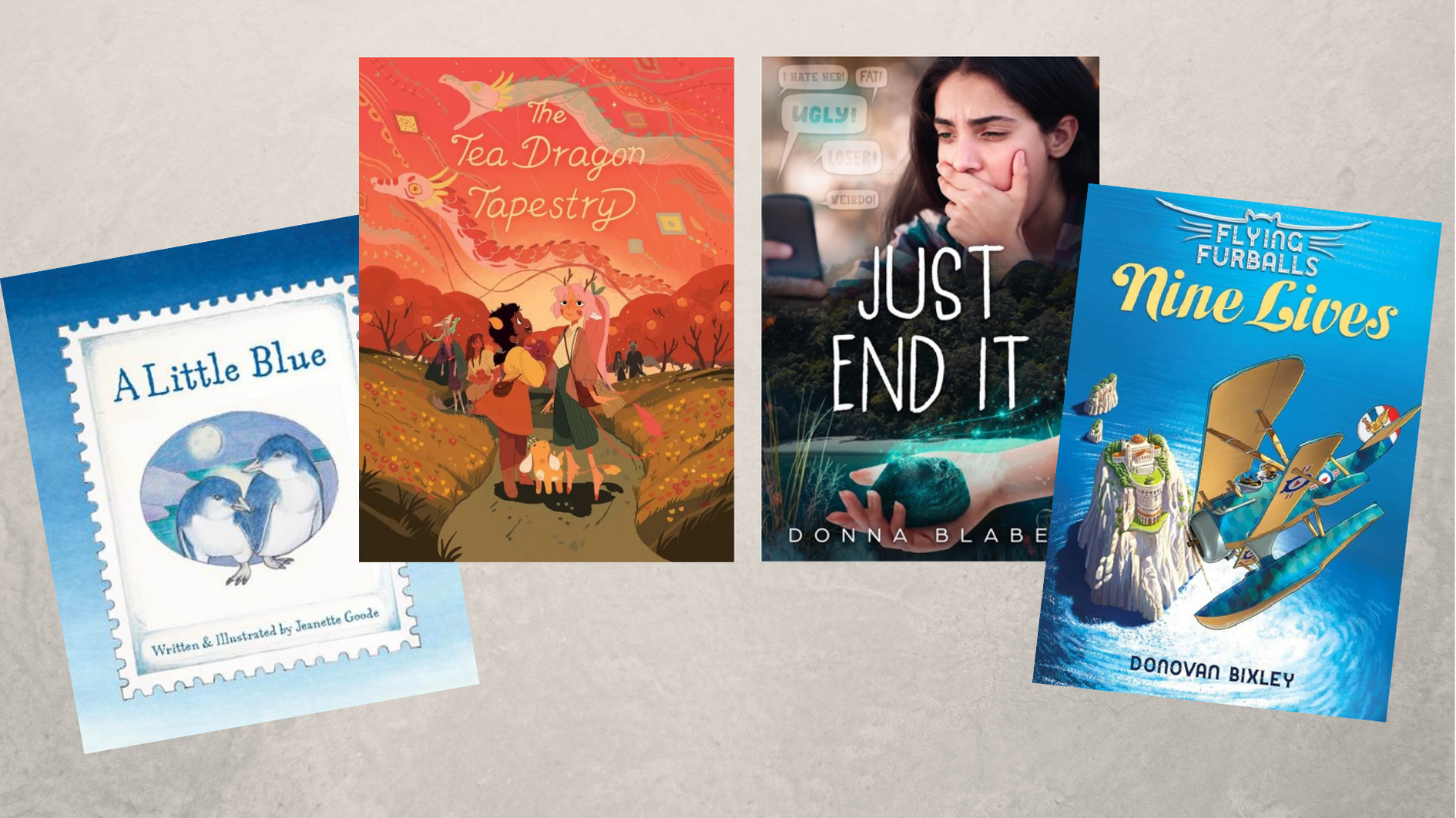
Flying Furballs: Nine Lives written and illustrated by Donovan Bixley
Mon Dieu! – beloved ace pilot and war hero Claude D’Bonair is dead! The book opens with his funeral, presided over by the pompous and self-centred Major Thom, but we quickly discover that all is not as it seems. Major Thom has secrets and our hero is reaching out from beyond the grave to bring Thom in, and, with the help of his trusty best friend, Manx, scuttle the evil plans of dictator-in-waiting, Alf Alpha.
The plot is fast-paced and action-packed, with the baddies well flagged and our heroes winning through with intellectual smarts and brave exploits. In keeping with the previous titles in the series which loosely followed the events of World War II (WWII), this grand finale seeks to wrap up some post-war loose ends. There are hijinks-a-plenty, and while the plot is thematically light, and we don’t ever really fear for our heroes, there is plenty to engage and entertain, and emergent readers will sail confidently through this romp all the way to the dramatic climax.
There are hijinks-a-plenty, and while the plot is thematically light, and we don’t ever really fear for our heroes, there is plenty to engage and entertain…
The real fun is in spotting the pop culture references, the sly word play and punning humour Bixley sneaks into his text and illustrations. I love the detailed diagram of the plane covered in informative labels and the rundown on how roman numerals work—these are terrific references for fact-hungry young readers. Bixley often pays homage to famous artworks in his books and Nine Lives is no exception, with the illustration on the inside back cover showing a feline imitation of the well-known post-WWII photograph of a sailor and nurse kissing on V-J day. Wonderful stuff!
My only quibble is the occasional focus on the expanding girths of Syd and Major Tom as a subtle means of disparagement. It’s an offkey note in an otherwise classy production.
I admit I had previously only read the first few titles in this series, but I had no problem keeping up with this tale. I think any youngster who starts with this book would be more than happy to go back and check out all the previous Flying Furballs books.
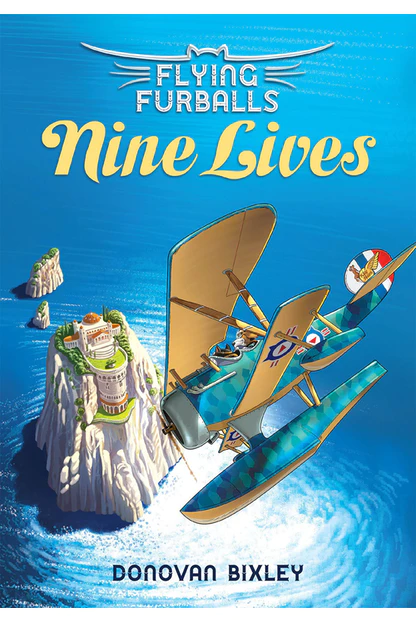
A Little Blue, written and illustrated by Jeanette Goode
There is a lot to like about this sophisticated picture book/junior fiction hybrid. The title, A Little Blue, is a multi-layered clue to what we will find inside. Epistolary in form, the story follows Simmy’s time staying with her Dad at his beach side house on the West Coast.
Simmy is living with her dad because her mum is sick, so the book begins with her begging her mother to let her come home. Everything is strange and not at all what she’s used to, and she’s stuck there until her mother gets better and there is no certainty that she will.
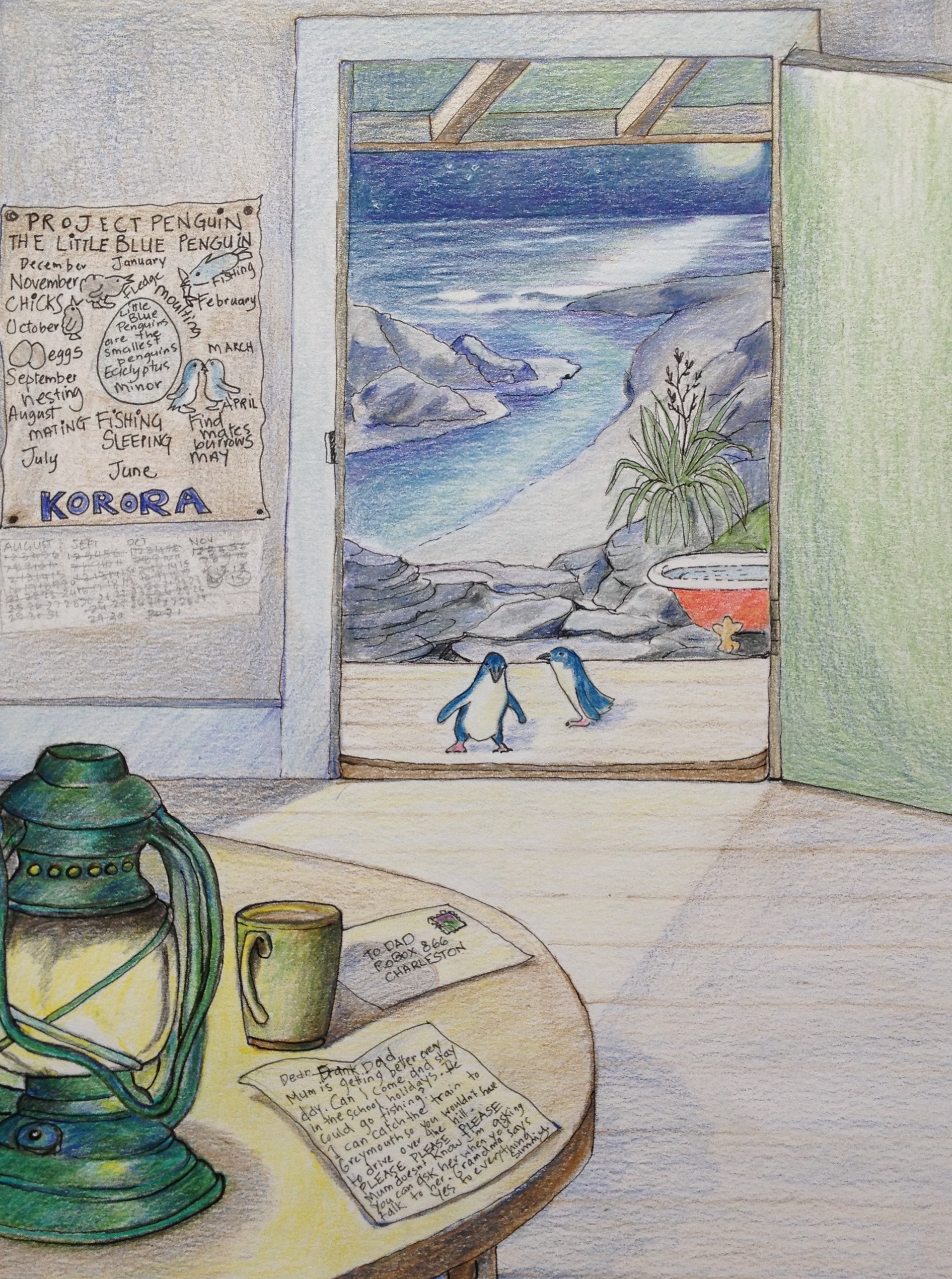
We are cleverly drawn in to Simmy’s mind through the subtle text, beginning with the misery she feels as she misses her normal life and her mum most of all. But from letter to letter we find Simmy less and less resistant to her new surroundings as she gradually becomes involved in coastal life, especially with the pair of Little Blue Penguins nesting under her bedroom floor. We learn about penguins along with Simmy, and about the unexpected joys and challenges of living by the ocean.
… from letter to letter we find Simmy less and less resistant to her new surroundings as she gradually becomes involved in coastal life …
I was really charmed by this book. The writing is assured and captures Simmy’s voice well. There is plenty to discover in each letter and illustration about local life, local fauna and Simmy herself, and the story charts a realistic trajectory for Simmy’s transformation, ending with a satisfying twist.
The accompanying artwork suits the feel of the book, effectively depicting the changing emotions and environment. A donation from every sale of this book goes to the West Coast Penguin Trust to assist with research, conservation and education programmes. Recommended for kids aged 7-10.
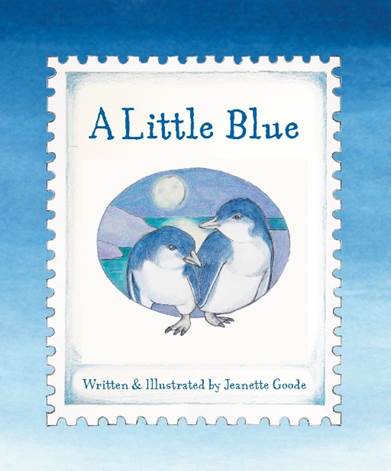
Just End It, by Donna Blaber (Light House)
Twelve-year-old Jess has been pushed out of her long-time friendship with bestie Hayley by glamorous globe-trotting usurper, Alexis. Now they’ve turned against her, making fun of her and bullying her whenever the opportunity arises in class, on the school bus, and eventually online. The pair are slick operators, isolating Jess, and in her confusion and resulting shame she finds it impossible to talk with anyone about her problems.
Meanwhile, Jess finds a rock down on the beach and there is something special and mysterious about it. She learns the rock is obsidian, and was used by early Māori, for whom it was sacred, to make blades. Did she take it when she wasn’t meant to? Is this the source of her bad luck with Hayley?
Did she take it when she wasn’t meant to? Is this the source of her bad luck with Hayley?
Then she starts having vivid dreams about a young pre-European Māori girl, Hine, and her family, and the role the rock played in their lives hundreds of years before. As Jess becomes involved in Hine’s life, the dreams start to weigh on her. As with the bullying, this becomes another secret that Jess is unable to share.
Luckily, Jess gradually comes to discover she has some allies, both at home and at school. Slowly through the dreams and the positive energy of the rock, and the gentle persuasion of her peers, Jess is encouraged to tell her secrets and get the help she needs.
Small town New Zealand is described well. There are some lovely turns of phrase such as ‘her ears were like traitors,’ and the musing on the snails living in the letterbox. But the book is narrative-heavy. This is particularly frustrating early on, and gets in the way of the reader truly knowing what makes Jess, Hayley and Alexis tick.
Small town New Zealand is described well. There are some lovely turns of phrases…
I would have loved to see more scenes actively revealing Jess and Hayley’s friendship, depicting Alexis’s growing influence over Hayley, and the souring of Jess’s relationship with her best friend. The bullying, when it happens, loses some of its power because of this, and knowing Jess better would have underlined why she responds the way she does.
The cover of this novel makes a promise to tackle some big concerns young people are faced with today, especially girls—bullying, cyberbullying, and toxic friendships. In the end I think the writer hasn’t given her audience what they are led to expect.
The title ‘Just End It’ refers to the cruel language used in real life cyberbullying. This phrase is usually delivered as a command, and has had some horrific results in real life. The same words also appear inside the book when the antagonists bully Jess online, but they’re not really used, or perceived in the real-life sense, and the author doesn’t pursue this possible meaning, or the potential repercussions, despite the fact this kind of bullying can happen to children of this age. Jess’s reaction revolves around embarrassment rather than an erosion of her self-worth or questioning of her existence which is what this kind of language does.
Jess’s reaction revolves around embarrassment rather than an erosion of her self-worth or questioning of her existence which is what this kind of language does.
In choosing not to follow a statement like ‘just end it’ through to its likely impact and resolution, the author has denied the reader a chance to understand its full implications and possible strategies for dealing with this kind of situation. Also, once the main character tells the trusted adults in her life what’s been going on, things are resolved very quickly and neatly and I know from experience that this does not represent real experience.
For many bullied children, attempts to deal with it or fix it are more of a band-aid than a cure, and victims often feel traumatised by their experience for years afterwards. I feel confident in saying all of this as one of my children (now in their twenties) experienced this kind of bullying when they were at intermediate school.
The most positive message here is about the dangers of easy access to social media, and the advice to speak up. No child can work through these issues without help and support.
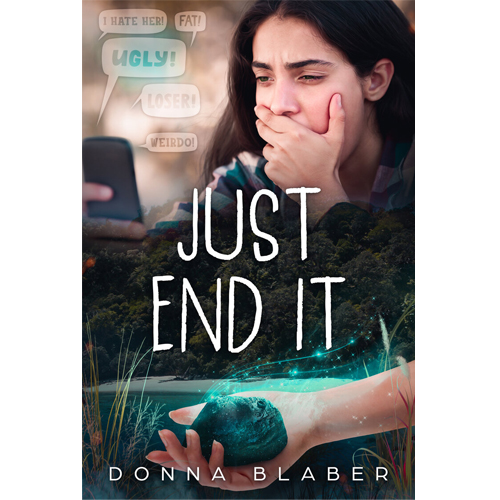
The Tea Dragon Tapestry, written and illustrated by K. O’Neill (Oni Press)
I have never come across a junior graphic novel quite like this before. The illustrations, created with earthy hues in vibrant tones, are visually arresting, and the language is genteel and sweet, rather like the tea party that one might be inspired by this story to have. I wasn’t previously familiar with K. O’Neill’s junior graphic novel work, but they’ve been publishing for a while now and the first comic in the Tea Dragon trilogy (The Tea Dragon Society, Oni Press, 2017) won an Eisner, and a Harvey Award for best children’s publication.
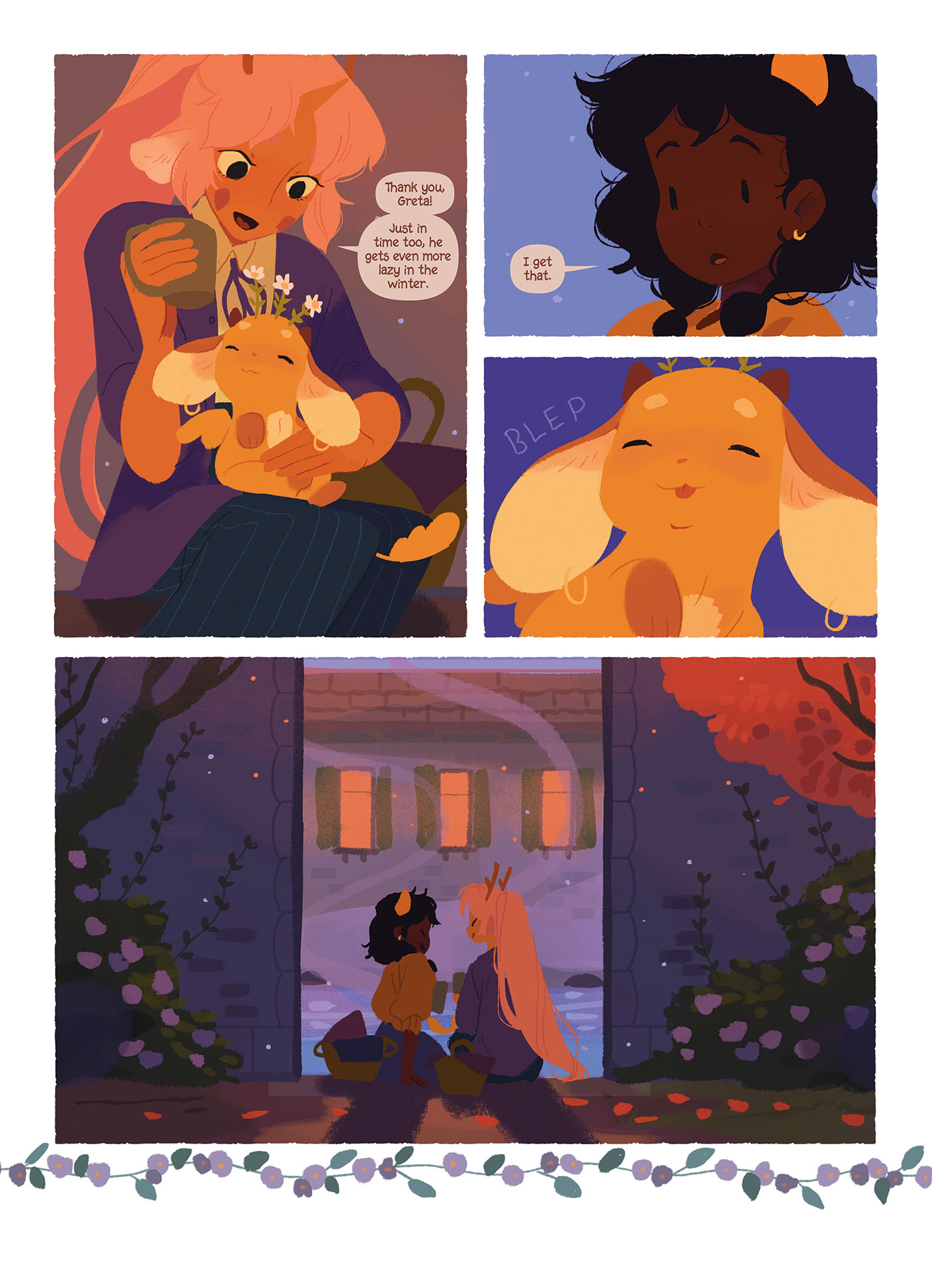
Despite not having read the previous two books in the Tea Dragon trilogy, it’s possible to pick up most of the threads of the ongoing story without too much trouble. The two main characters, Greta and Minette, live in a small rural village peopled by a mixed assortment of fantasy creatures, some mostly human, and some faun or goat-like. Greta is a talented blacksmith apprentice learning her craft from her highly skilled mother. A master blacksmith, the bull Kleitos, is coming to the village to test her skills and assess her before deciding whether to take her on as a new student. Her good friend Minette, previously living in a monastery, has now settled to life in the village.
The two main characters, Greta and Minette, live in a small rural village peopled by a mixed assortment of fantasy creatures, some mostly human, and some faun or goat-like.
Both are carers for tea dragons, small cute creatures that grow herby foliage from the top of their heads. Greta’s tea dragon, Ginseng, is still grieving for its previous owner and Greta is concerned for its wellbeing and worried that she is not doing enough for the creature. She is worried too about what she should make to impress the master blacksmith. After receiving a package containing a tapestry that she was working on at the monastery, Minette starts having dreams that distress and confuse her. She feels lost and disconnected, without purpose.
This story is about family. Both birth families, and the ones we create for ourselves. It’s about grief, for lost ones, past lives, and purpose, and about rebirth and renewal. The story has a thoughtful, philosophical tone and there are some gentle life lessons here about grief not being something you can just cure, about accepting that sadness and challenges are just as much a part of life as joy and success, and about finding a new purpose when the old one no longer fits.
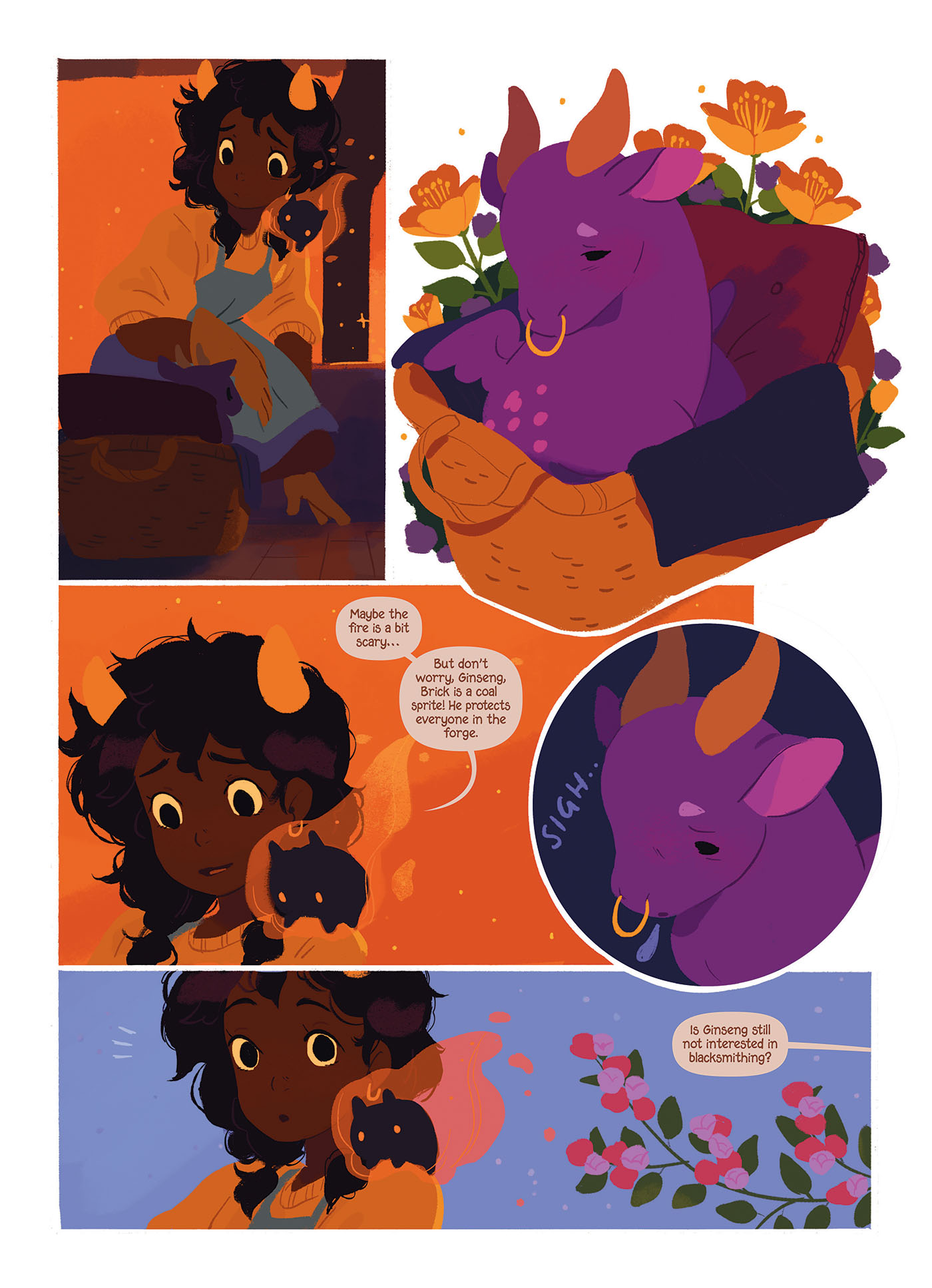
This comic redefines what it means to be inclusive. There is the wheelchair-bound ex-adventurer Erik who still wields a sword, but has embraced his new quieter life with goat creature Hesekiel. The characters are racially and species diverse and roles are not defined by gender. The art work is full of luscious, rich colours with dreamy natural settings, and the tea dragons are adorable. While this might not be everyone’s cup of tea, I think the quieter, contemplative nature of this graphic novel will spark joy in a lot of young readers.
This comic redefines what it means to be inclusive.
The book concludes with some background information on Tea Dragons. Perfect for every young person who wishes they could have one of their own.
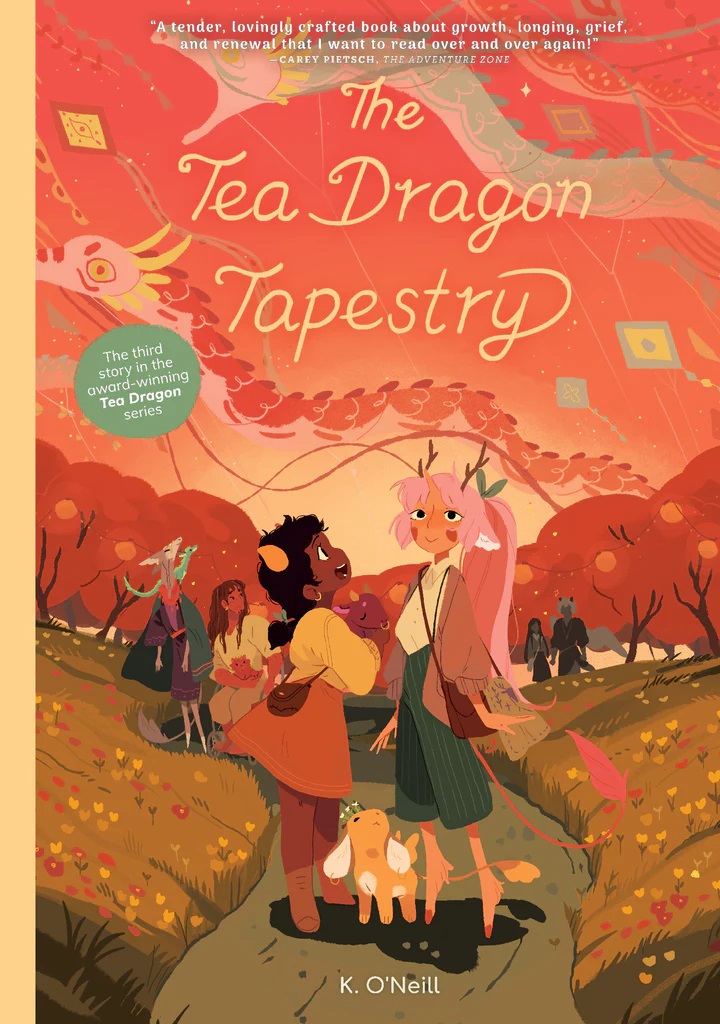

Melinda Szymanik
Melinda Szymanik is an award-winning author of picture books, short stories and novels for children and young adults. She also writes poetry for adults and children, and regularly teaches creative writing. Recent titles include Lucy and the Dark (Puffin [Penguin RH], 2023) and Sun Shower (Scholastic, 2023).



